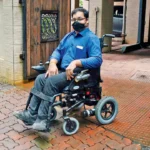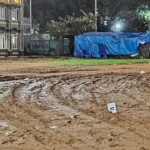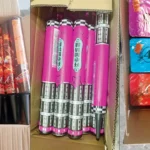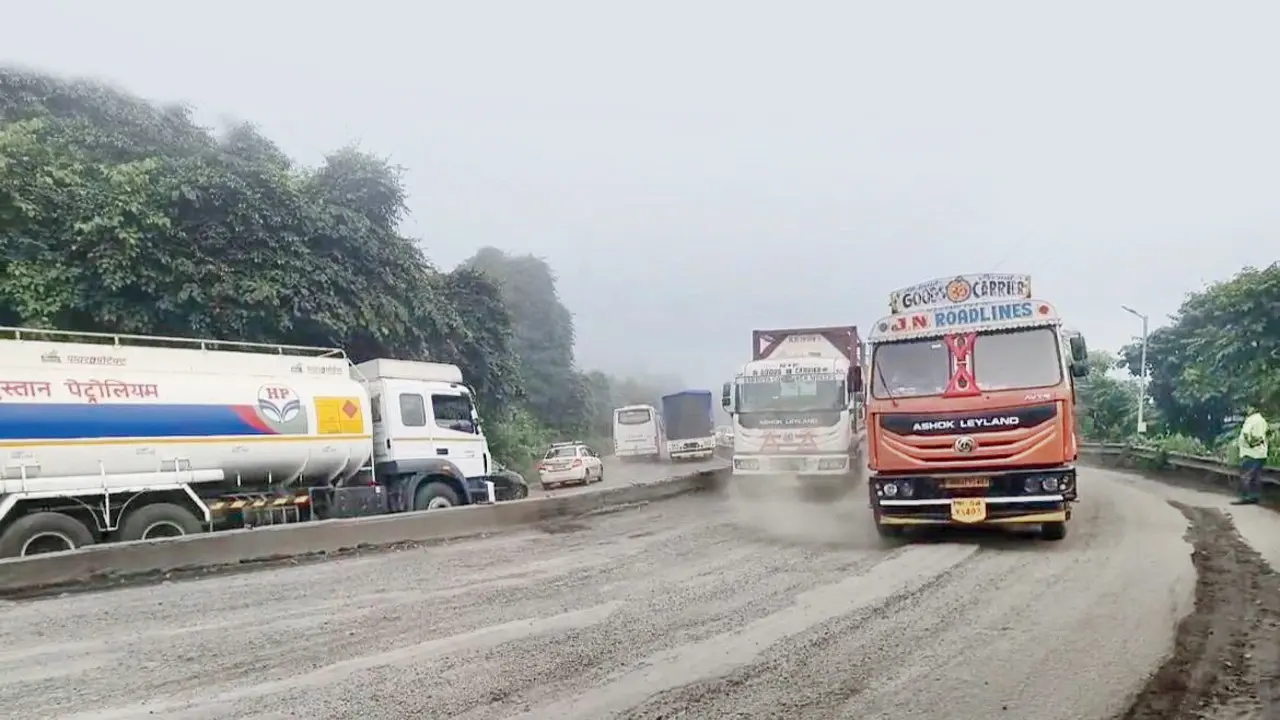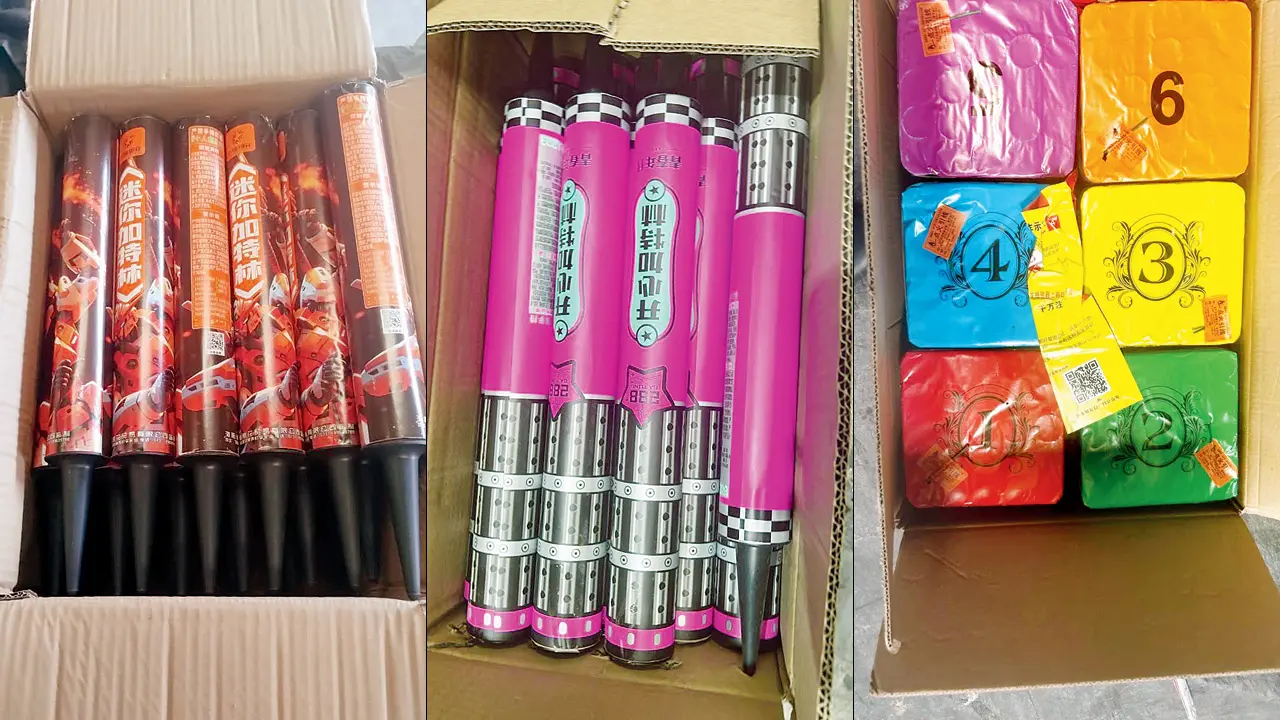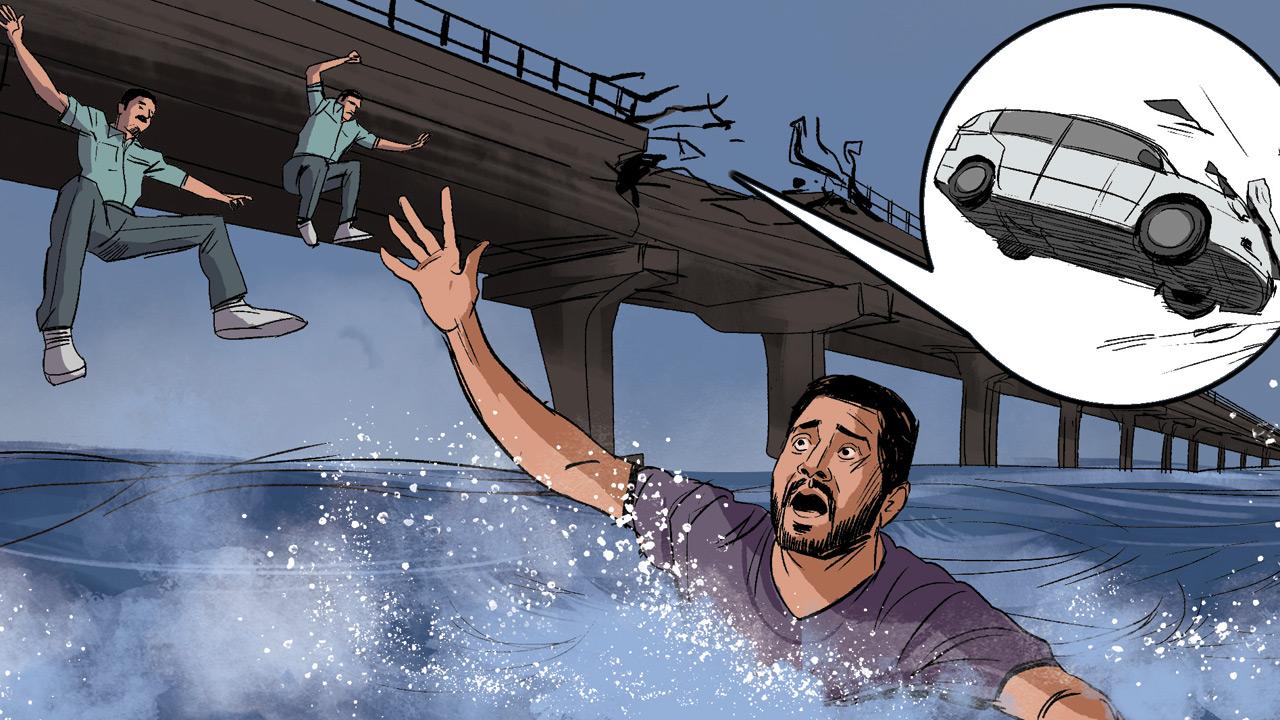For commuters, truck drivers, and locals, the Mumbai-Ahmedabad Highway (NH-48) has become synonymous with constant fear due to potholes, broken medians, poor lighting, and incomplete repairs. On the Talasari-Dahisar stretch, 238 accidents have claimed 131 lives this year, a grim reminder that piecemeal measures and temporary traffic restrictions cannot address the deeper, structural failings of the road.
Despite a massive white-topping project, locals say the highway’s condition has barely improved. “The so-called repairs have made no difference — fatal accidents have actually increased, and traffic flow has worsened. Contractors face no real liability, and NHAI [National Highways Authority of India] has failed to repair the road. Ambulances, schoolchildren, and workers continue to suffer every day,” said Harbans Singh Nanade, spokesperson of the All India Vehicle Owners & Drivers Federation.
The stretch often sees traffic snarls, but activists say this is just the tip of the iceberg
NHAI, however, maintains that the work is progressing steadily. “So far, 99 per cent of the white-topping has been completed,” said Suhas Chitnis, project director, NHAI. He denied claims that the repairs have worsened road safety. “The work and traffic were ongoing simultaneously. While the quality could have been better, the overall road condition is not bad. There are a few potholes, and the three highway outlets are in poor shape, forcing traffic onto this stretch as there are no alternate routes.”
Structural failures
While authorities have imposed restrictions on heavy vehicles between Thane and Bhiwandi, critics argue that limiting truck movement is a band-aid solution. “There are no terminals for truckers, forcing them to halt on the road or enter city lanes. Wrong-side driving is rampant, lane discipline is missing, traffic restrictions are not followed, and drivers often lack proper information. Criticising heavy vehicles alone doesn’t help — they are part of the system, and essential goods still need to reach people. Everything must work in coordination, or the problems will continue,” said Shraddha Rai of digital platform Zimmedar Kaun, which has been pushing for accountability on NH-48.
The military vehicle that broke down in the first lane of the highway, but received no assistance for nearly 1.5 hour
“From Gujarat till the border, driving is smooth — but the moment we enter Maharashtra, it becomes hell. We suffer the most between 5 pm and 10 pm,” added a truck driver. Sanjay Dhawle, a member of the Heavy Container Association, stated, “The blame game needs to stop. The real problem is the road itself, and every year it’s the same story. The highway still has numerous potholes, even in the middle lanes, and in some areas, streetlights don’t work. It’s not just trucks — even small cars and bikes struggle. Temporary repairs don’t fix anything. The travel time for heavy vehicles has tripled. We pay our taxes, but still lack basic facilities and parking spaces. Many drivers have left the state in frustration. We need a dedicated lane, ideally on the right side, 24 hours a day, so we can operate with dignity.”
A deep crater, the likes of which are responsible for accidents
Rashmil Kothari, another Heavy Container Association member, highlighted the potential impact of the long-awaited Virar-Alibaug Multimodal Corridor: “Once completed, it could save nearly 80 km of travel by providing an alternate route for vehicles, especially heavy trucks and freight traffic. Thousands of vehicles would be diverted from NH-48, easing congestion, reducing pollution, and offering direct connectivity to Jawaharlal Nehru Port Trust (JNPT), which would relieve traffic through Thane and Palghar districts. But the project is delayed, and until it is operational, these problems will continue.”
“Traffic jams are just the tip of the iceberg. The real problem is the road itself — broken medians, potholes, and no proper signage. Even a short trip feels like a risk to life. We feel helpless as ordinary commuters,” said a small business owner who travels the highway frequently.
A grim picture
On the Talasari-Charoti stretch, 99 accidents took place in 2024, leaving 57 dead and 37 injured. This year, there have been 49 accidents, which claimed 42 lives and left five injured. Between January and August 2025, 143 accidents occurred between the Dahisar to Khaniwade toll nakas, claiming 57 lives, while 46 accidents left 21 people seriously injured and 32 dead on the stretch from Manor to Waghoba.
On Thursday, September 18, a 16-month-old boy died when the ambulance ferrying him from Naigaon to a Mumbai hospital was stranded for hours in a jam. On July 31, a 49-year-old woman, Chhaya Purav, died after an ambulance ferrying her for treatment was stuck on NH-48.
“On September 24, a military vehicle broke down in the first lane. They called 1033 for help, but no assistance arrived for nearly 1.5 hours. Eventually, another military vehicle came with all the necessary tools and towed it aside. Meanwhile, fast-moving cars kept zooming past — if even the military can’t get timely help, what hope do ordinary commuters have? NHAI must take responsibility for such situations,” said a commuter.
Plans and reality
From September 20 to October 2, heavy vehicles will be prohibited in two slots — 11 am to 5 pm and 10 pm to 6 am. The MBVV Commissionerate has also issued a notification restricting the entry of trucks with 10 wheels or more from both Gujarat and Mumbai into Thane, Bhiwandi, and Kalyan. Essential vehicles — ambulances, fire brigades, police vans, oxygen carriers — remain exempt.
Authorities insist that traffic restrictions on heavy vehicles are necessary to prevent gridlocks. Deputy Commissioner of Police Sandeep Rajaram Doifode said: “These restrictions are urgently required to ensure commuters and emergency services are not trapped in avoidable jams.”
Yet locals say this is only a partial measure. “We’ve sent letters, filed RTIs, staged protests — but nothing changes. Unless road design, lighting, and basic facilities are fixed, controlling trucks alone will not stop people from dying,” said Nanade.
Action not taken
Ashwini Bhide, principal secretary to the chief minister, has directed the Palghar collector to survey accident-prone spots, potholes, and streetlight gaps, and a committee has been proposed to study the causes of accidents. But residents say progress is painfully slow.
“We had productive meetings with the collector and were informed that a committee would be formed after a discussion with NHAI, possibly on Friday. An audit has already highlighted several black spots, yet NHAI continues to postpone the repair work. Despite Rs 600 crore being spent on white-topping, the road is still full of potholes, tolls are being collected, and people are continuing to die. Urgent action is needed, and someone must be held accountable,” said a local activist.
Chitnis, however, claimed to be unaware of any such meeting. “We have no objection to attending, but we have not yet received any formal intimation,” he said. Rai summed it up: “This is a collective issue that requires immediate implementation, but nothing has materialised yet.” For now, NH-48 remains a dangerous gamble. As Neha Sharma, a Virar commuter, put it: “Every time I drive on this road, I feel like I’ve been given a second chance at life when I finally reach home.”



